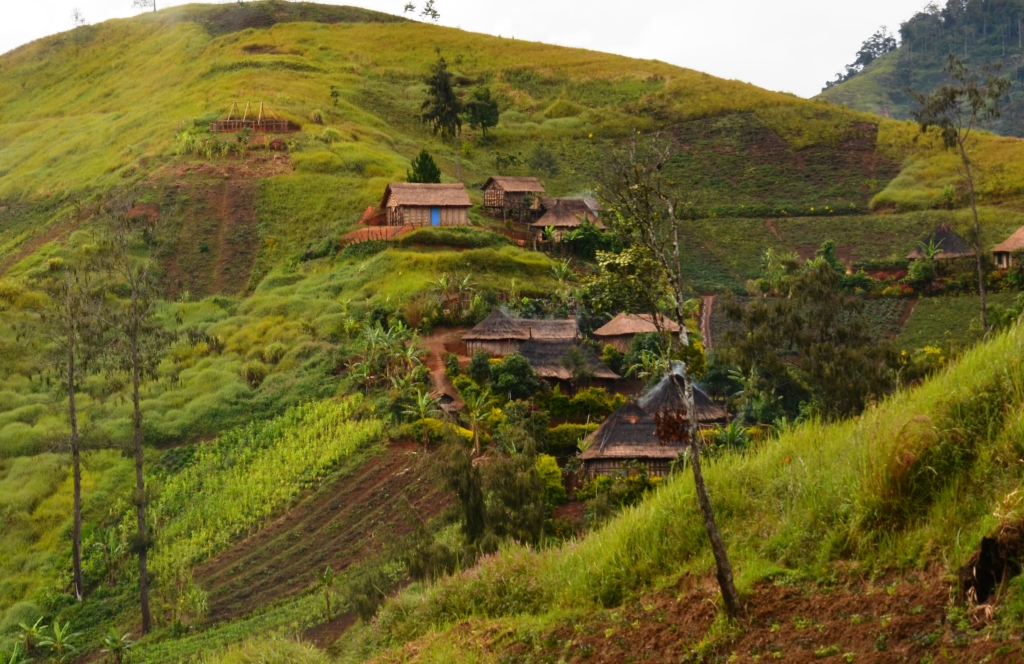
Papua New Guinea (PNG) is famous for its multitude of pig cultures. When an invitation by Dr. Workneh Ayalev of its National Agricultural Research Institute (NARI) in Lae arrived to catch a glimpse of them, this was a rare and cherished opportunity. Dr. Workneh who hails from Ethiopia shares my confidence in the value of indigenous breeds, in fact did a seminal study comparing the benefits of cross-bred versus indigenous goats to farmers in the Ethiopian highlands.
The trip to Lae was an add-on to a symposium on customary rights and traditional knowledge that took me to Griffiths University in Brisbane where I met plenty of law professors that had began their careers in the roughs of Melanesia. They issued me with a catalogue of warnings and tips to protect myself in this wild place against thieves and malaria. I also had picked up a copy of Throwim way leg, a book written by Australian zoologist Tim Flannery who studied the country’s mammals and other fauna in the 1980s and early 1990s. After digesting these various sources of intelligence, I was beginning to get second thoughts about the wisdom of travelling to PNG. It was not only the danger of malaria and other diseases that worried me, but some of the descriptions of cruelty to animals, such as limbs being hacked off living turtles and dogs given terrible treatment. Would my maxim of “animal cultures, not animal industries” hold up in such a place?
However, once I reached everything worked like clock-work. I had the pleasure to be guided by Dr. Pikah Kohun, principal scientist at NARI, and did not see any cruelty to animals. All people that I met were extremely friendly and helpful; the country is truly God’s own – never ever have I seen such a paradisiacal place where a cornucopia of fruits, vegetables, tubers is just growing into your mouth so to speak. The dogs I saw were treated nicely too!
Over the next few days I had the pleasure of being introduced to three women pig keepers.

The first one, in the lowlands, was Edith, who kept her pigs in a spacious corral – there were three of them, one of them by far the thinnest porcine specimen I have ever seen. It was a “white pig”, mostly exotic blood, and probably could not sustain herself on the local feed; the other two were black and in fine fettle, although they were not fed any differently. Edith was also running a guava tree plantation and kept chickens and Muscovy ducks. Her garden was that of Eden – we were served fresh coconut water and given huge gifts of bananas, papayer and guavas – the largest I have ever seen.
On the second day we travelled to the highlands, to Goroka, on a very smooth, only occasionally pot-holed road, past the air-strip from where Amelia Earhart once started her last flight, through almost infinite pastures on which beef cattle were enjoying the lush grasses, up a fairly steep ascent offering mind blowing vistas, then along . On the way, we stopped at two markets to get an idea of the range of vegetables and fruits available; piles of earthy peanuts, bunches of bright orange carrots, heaps of taro, groups of areca nuts, assortments of lychees, rows of tomatoes, crimson beef sausages from Ramu, live chicken and many more varieties were neatly layed out on card board with little hand written price tags.
In Goroka, we picked up Joe Alois, an animal scientist currently with the Fisheries Department, to introduce us to a peri-urban pig keeper. Although it had started pouring, Betty received us amicably and led us to her pig stable, a wooden cage on stilts, stocked with three sows.

Again a mixture of white and brown indigenous pigs. I had hoped to see free-ranging pigs, but clearly this was not possible in this part of town which was composed of little fenced in gardens. Besides, there is the permanent theft problem. Betty also showed us her boar, a very placid animal that was tied up by its frontleg to her verandah and seemed very friendly and keen to be petted.
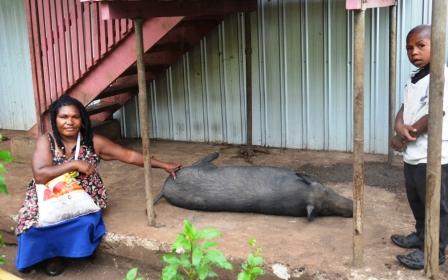
On the next day, the weather was friendlier and we had the privilege of being taken to Joe’s family homestead, some distance out of town, and accessible only via a steep climb on foot. It was a gorgeous place with stunning vistas and Joe’s wife Nancy, also a graduate in animal science, explained to us her pig husbandry system. She had three sows that were tethered during the day in various fields which they dug up and thereby ploughed and prepared for planting. The piglets were running free, in fact, when Nancy called them they raced up to the hill to her, but stopped in their tracks when they saw us strangers. All the pigs are given names and they are not raised to sell them, but for feasts and to resolve conflicts within the community. If somebody is upset with you, this can be set straight by the gift of a pig. I also learnt that one family cannot manage more than six sows; otherwise the work gets too much. When the sows show that they are in heat, Nancy unfetters them and they seek out a free-ranging wild boar and come back pregnant.
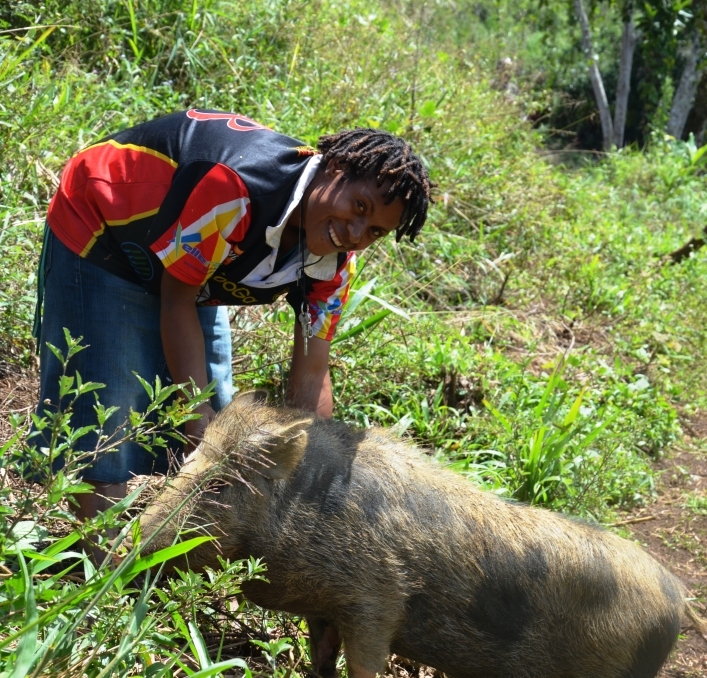
It was clear that exotic pigs don’t make any sense in this kind of setting. First of all they get sunburn and secondly, they would grow too fast and need too much feed. The local pigs are much better able to fulfil a storage function in a system where it is unpredictable when the pig will be slaughtered.
Another highlight of the trip was a meeting with Professor Alan Quartermain at the University of Goroka who has lived in the country for decades and written extensively about its animal husbandry systems. Already in the 1980s, he had the foresight to get his students to study and document the way animals were kept in their home villages; one of these reports he had dug out for me which provided very interesting details on how in the traditional PNG Western Highlands women had shared a house with the pigs, while the men slept separately. In return, I presented him with a copy of the booklet by my friend and colleague, Dr. Balaram Sahu on the pig nomads of Odisha (India), who earlier contributed a guest blog here.
My final act in PNG was to give a lecture at NARI for which I had chosen the title “The power of indigenous breeds for rural transformation“. It generated good discussion, not only about pigs, but also about the country’s poultry industry – PNG is actually one of the few countries in the world that is free from Newcastle disease – an enormous advantage for its chicken rearers. unfortunately this status appears to be threatened, due to the government’s decision to allow imports of fresh eggs and uncooked chicken meat.
Trying to sum up the similarities between animal husbandry systems in PNG’s extremely wet environment and the drylands that I am used to, I once again came to the conclusion that if local resources – genetics, feed, and culture/knowledge – would be the foundation of livestock development, this would certainly make the world a better place, create more rural income, conserve biodiversity, and be much better for the environment. Maybe sufficiency should be the mantra of the livestock sector, rather than efficiency!
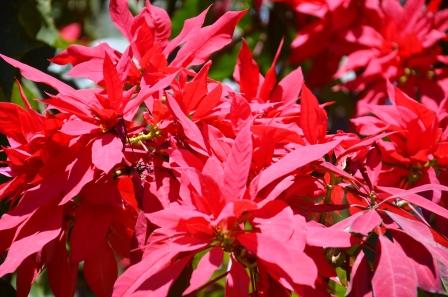 Useful literature
Useful literature
W. Ayalew, G. Danbaro, M. Dom, S. Amben, F. Besari, C. Moran, and K. Nidup. 2011. Genetic and cultural significance of indigenous pigs in Papua New Guinea and their phenotypic characteristics. Animal Genetic Resources 48: 37-46.
Quartermain, A, R. 1977. Pigs, goats and people – on the role of animal husbandry in the tropical subsistence agriculture. P. 54-60 In: Enyi Bac and Verghese, T. (Eds) Agriculture in the Tropics, University of Papua New Guinea, Port Moresby.


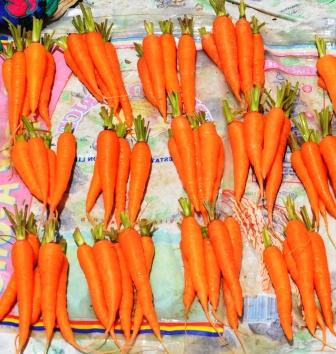
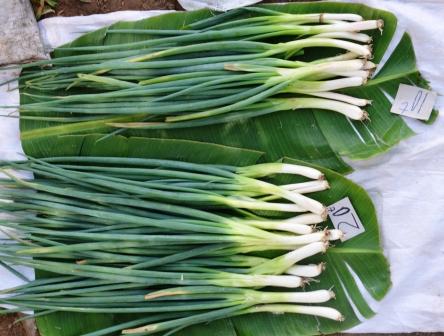
 Follow
Follow
Very Informative and educative. Thanks Dr Ilse for giving us the live picture of PNG’s animal culture
Thanks Dr ilse very intresting and informative family scale production systems r similar world over
Dr Ilse excellent however you missed probably the man with the biggest number of pigs at any one time in PNG. A well known and respected highlands pig farmer – Akilo Pureni; you would have met him if you had travel a few ks up to Tambul through Mt Hagen.
Thanks for that comment! Unfortunately my time was so short – next time I would definitely try to go to Mt. Hagen and hope to meet Mr. Akilo Purenic!
Dr Ilse, I work at NARI Livestock Project as a scientist on pig nutrition.
I missed out on your visit to Labu Station, being away on study at the University of Adelaide.
I wonder if you met my Beamish Boy (read dog), Neo ‘Korima’ White-bullet, at Labu, he’s usually hanging around my office waiting to guard me against the ‘Jabberwock’.
I am very glad that you had the opportunity to visit my country and a few farmers.
I know Akilo Purunu well. He is a magnificent man to meet, one of the original Yangpela Didiman (Young Agriculture Workers), a group founded by the Evangelical Lutheran Church in PNG.
Dr Workneh is also my mentor and I also agree with your thinking. I will certainly follow your blog with interest.